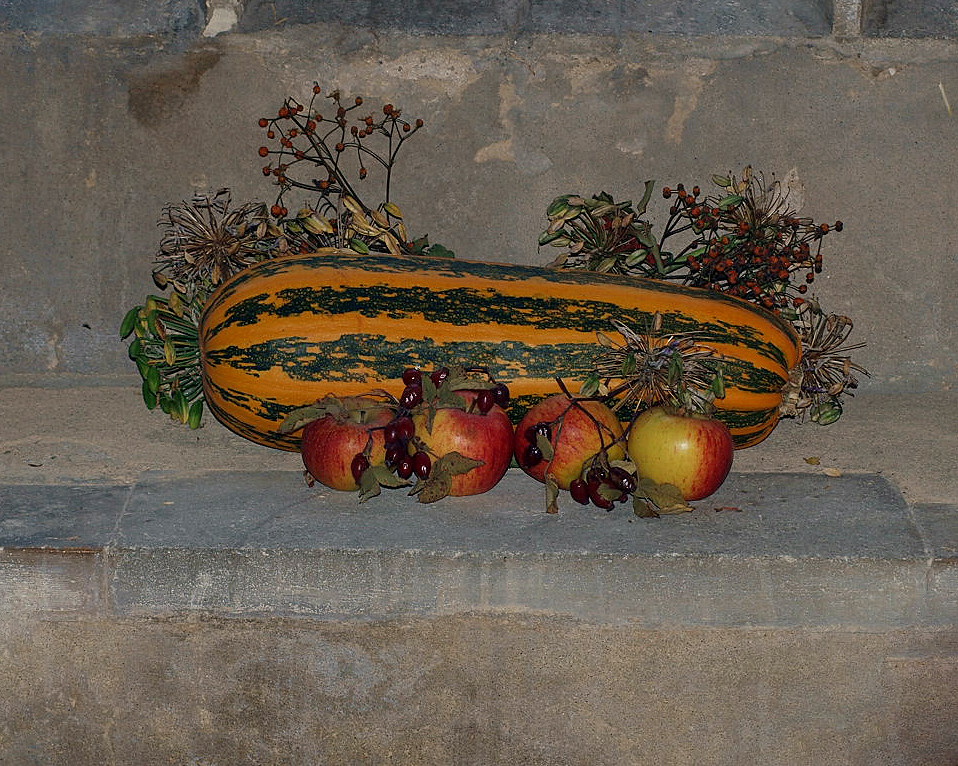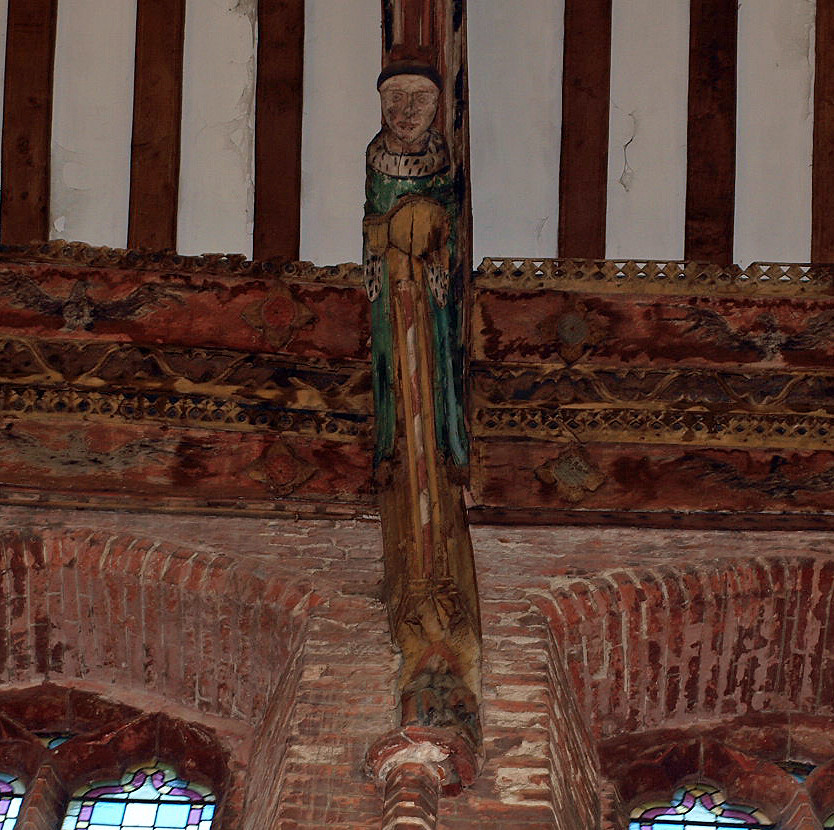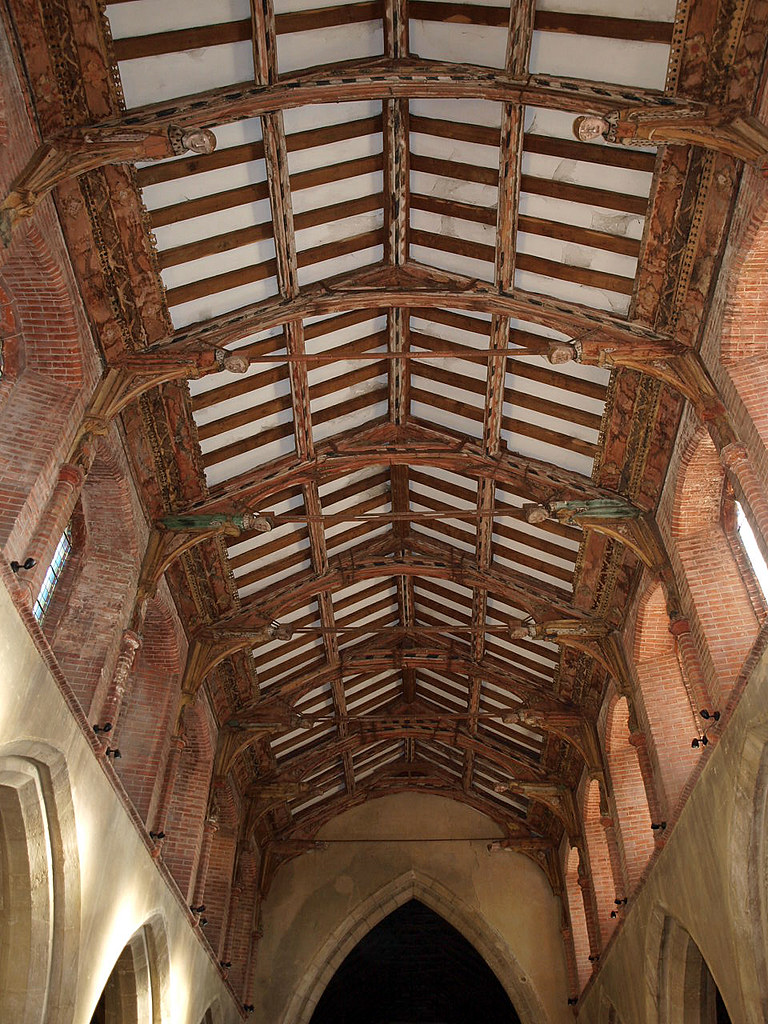ALL SAINTS. S aisle of the late C13, see the W window with plate tracery (two pointed-trefoiled lights and an enriched quatrefoil). Dec E window. Perp widening. The arcade is pre-Perp, with octagonal piers and double-chamfered arches. Dec W tower with a pretty C18 top. Tall arched bell-openings, and the walls all of flushwork in a chequerboard pattern. The chancel is of c. 1300 or earlier, see the N doorway and the E window (three stepped lancet lights under one arch). Perp N aisle. Late Perp clerestory of brick with two-light windows and a fine roof. Brick shafts help to carry it. Against these small seated figures. The roof is of the hammerbeam type. Against the hammerbeams figures holding a book, a chalice, musical instruments, etc. Carved and coloured wall-plate. - ROOD BEAM. Cut off flush with the walls. - STAINED GLASS. S aisle E window by Kempe, 1905. - PLATE. Elizabethan Cup. - (MONUMENT. Thomas Raymond d. 1680. LG)
Here, as in so many East Anglian churches, one of the chief glories is the 15th century roof, in brilliant colouring. Its effect is gorgeous. Colossal painted figures, like medieval giant dolls, lie out from the walls looking down on the nave, eight on each side, while eight beams cross the church from head to head. We were told that they were meant for kings and queens; in any case, they are a vivid and delightful group linking up in devoted service the 15th and 19th centuries, for the restoring and repainting of these fine old figures was carried out by the five daughters of a vicar still remembered. Mounted on scaffolding, they accomplished this tremendous labour of love for the church their father served. He himself is remembered by the carved oak pulpit.
A vicar just before him, Henry Dawson, was here for 46 years, and the east window of the Crucifixion and Ascension is to his memory. There is also a charming modern window of the Annunciation. Two worn poppyhead benches in the vestry are old, and the reredos is part of an ancient screen. A marble monument to Thomas Raymond tells us that he was “the first sole keeper of the Papers of State to Charles the Second.”
Flickr.



No comments:
Post a Comment